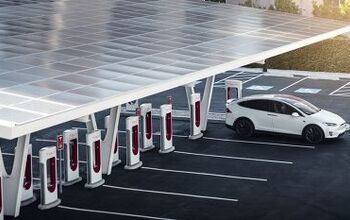Crapwagon Poll: 1978 MGB Vs. Triumph TR7

Today, I’m asking the readers to look at a couple underappreciated classics. I’m lumping them under the Crapwagon banner, as they are relatively unloved developments of some special British roadsters.
As I’ve mentioned before, I’m a child of the Eighties, so hot hatches and poster-style supercars certainly appeal to me. However, like many gearheads, my dad influenced my automotive wanderlust. Dad was into Datsun Z-cars as well as the MGB. There was rarely a time in my young life when the garage didn’t hold at least one of these paragons of Nixon-era cheap performance. I never got to drive Dad’s last MG, though, as he sold it (after I helped him restore it) when I was about fifteen.
The rivalry between devotees of MG and Triumph isn’t quite as contentious as that of Ford and Chevy, but there are those who will never consider owning one or another. My automotive literary hero, Peter Egan of Road & Track, wrote a wonderful column titled “The MG/Triumph Question” back in 1986 that covers the personality differences in the cars and their owners (sadly, I can’t find it online).
Since I’m in the Octagon camp, let’s look at the MGB first. It’s from 1978, so it’s hit with the triple whammy of rubber bumpers, Stromberg carburetor, and raised ride height. The extra weight, worse handling, and reduced power was a conspiracy between NHTSA, the EPA and British labour unions to encourage all Americans to buy Japanese. That said, this car looks remarkably good. I’d probably choose wider Minilites, drop the suspension back down, yank the emissions crap, and install a crossflow head with dual carbs. The Russet Brown color looks spectacular.
On the other side of the aisle lies “The Shape of Things To Come”. Triumph’s wedge-shaped TR7 was a revelation when it came out of Speke in 1975. This 1976 model is a fixed-head coupe, which I dig, though a roadster is always preferred. I love the period tape stripes, though I’ve never been a fan of aftermarket sunroof conversions. The performance of this TR7 is likely to be a bit better than the MGB, as it was designed with American safety regulations in mind. Here, I’d likely do a 16-valve Dolomite Sprint cylinder head swap for a bit of extra grunt.
So, B&B, I put it to you. Both of these classic British sports cars are for sale around $10,000. Which would you rather buy?
This poll has been removed.

Some enthusiasts say they were born with gasoline in their veins. Chris Tonn, on the other hand, had rust flakes in his eyes nearly since birth. Living in salty Ohio and being hopelessly addicted to vintage British and Japanese steel will do that to you. His work has appeared in eBay Motors, Hagerty, The Truth About Cars, Reader's Digest, AutoGuide, Family Handyman, and Jalopnik. He is a member of the Midwest Automotive Media Association, and he's currently looking for the safety glasses he just set down somewhere.
More by Chris Tonn
Latest Car Reviews
Read moreLatest Product Reviews
Read moreRecent Comments
- VoGhost OK. But if Subaru really wants this to sell, they'd make it as a PHEV with enough American content to get buyers $7,500 back on their federal taxes. Otherwise, this really doesn't stand out in a world of RAV4s and CR-Vs.
- VoGhost Tesla has an average of 28 days of inventory, less than half industry average.
- FreedMike Ah, Chesterfield Mall...my old teenage stomping grounds. Bummer what happened to it, that's for sure. But that's what happens when the city council approves not one, but two "premium" outlet malls right down the road to be built. That killed this mall dead.And in case anyone's interested...yes, Teslas and other EVs are very popular in that neighborhood.
- MaintenanceCosts Subarus can be durable, but they are going to demand more frequent and expensive regular maintenance than your typical Honda or Toyota. I suspect for a lot of third and fourth owners that means the economic equation favors scrapping them a bit earlier.
- Bd2 Hyundai and Kia have zero problem selling their respective Ioniq and EV models at or above MSRP. EV9 is the top seller in it's segment.



































Comments
Join the conversation
Standard MGB versus TR-7, I'll take the Triumph. Make it an MGB-GT, and I'll take the octagon. But I'll take a first-gen Miata over either.
I'm a little biased as I own 5 MGB's and only one Spitfire. I love the look of the Triumphs but that hourglass frame flexes like a banjo. I have no idea what frame is under a TR7 as the looks have no alure for me. I have two B's with V8. Both are SBC at this point but the one was built with a big block (454) but I blew it up pretty quick and replaced it with a small block until I replace the big block. The V8 really transforms the car as far as the power and the Corvette parts I used take care of the brakes and suspension. MGB's just look cool.